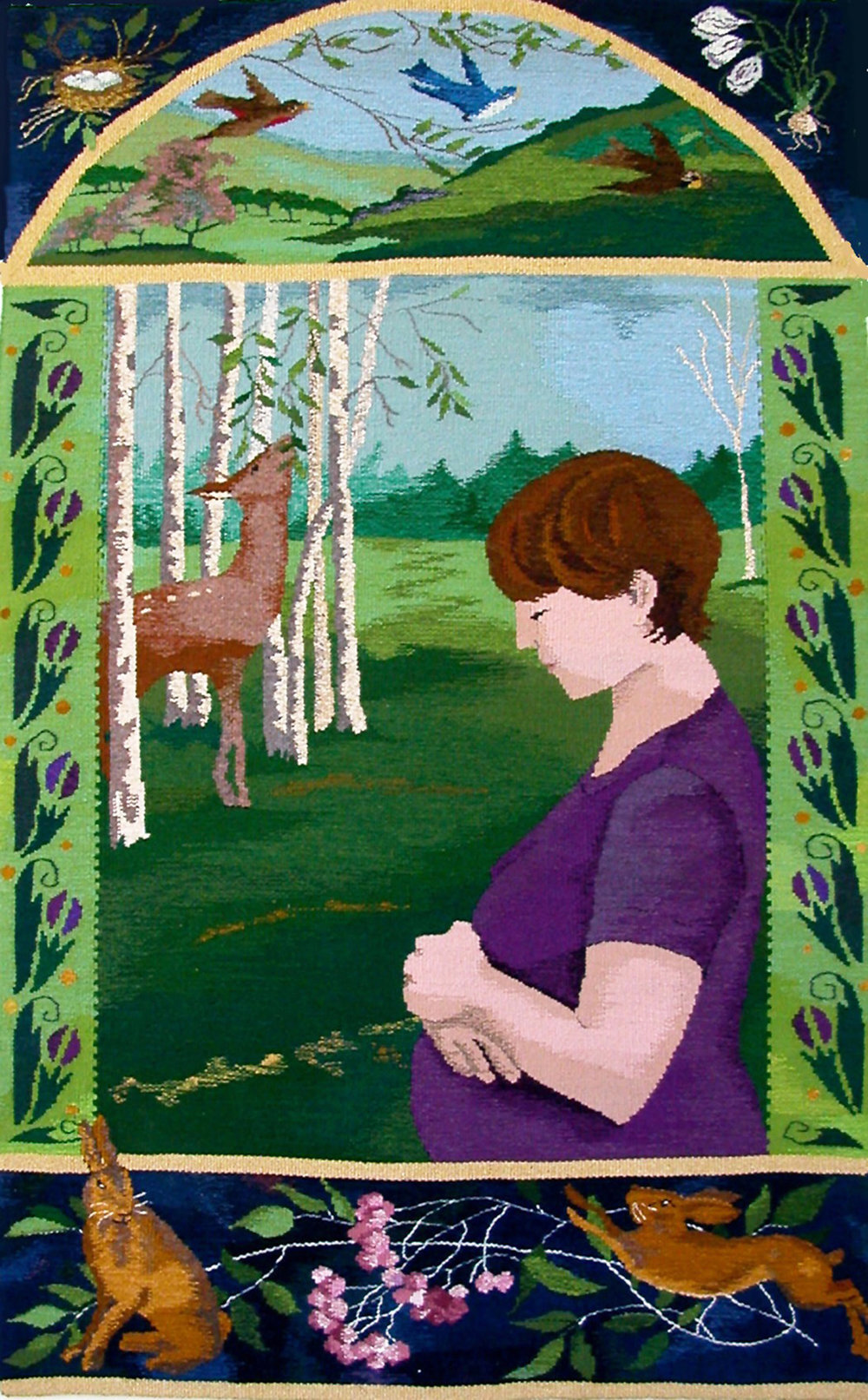Borders in Tapestries, part two...
Last week, I wrote about Borders in Tapestry, focusing on my own use of them. I mentioned, also, that in researching borders I decided to write a series of posts on how others implement borders in their tapestries.
Of course, one of my favorite places for research is the website of the American Tapestry Alliance, so that was my next step in looking at more examples. I found a couple of articles in the Tapestry Topics Winter 2006 issue on Transitions (with several other informative articles on joins that might also be of interest).
The two articles I reference here are by Kathy Spoering and Sarah Swett on their use of borders. Their weavings are both in the narrative style, but with completely different approaches to the border.
Kathy Spoering
Kathy’s article takes the reader through her path to add borders to her tapestries and her influences along the way. Her first border was added simply as a solution to solve a problem. She needed to adjust the proportions and found a border along the bottom edge effectively adjusted the height without affecting the cartoon.
“Not wanting to alter what I had already designed, I decided to simply add the needed length to the bottom, and create a border for the design.”
Kathy Spoering, Watermelon Girls, from the Heritage series, 40” by 50”. Photo by K. Spoering
She writes in the article how she discovered she loved that little 5” of border - and likened it to a writer using adjectives. We see this border in her Heritage series, where the border is only along the bottom edge, adding descriptive details to the narrative of the tapestry.
Kathy Spoering, Spring, or A Time to Wait, 52” x 32”. Photo by K. Spoering
Following the Heritage series came Four Seasons, which feature individual borders around all four sides that further support the narrative theme of the tapestry. The arched imagery on the top border also ties the works together in each of the pieces.
Sarah Swett
Red Nuns; hand woven tapestry; 35" x 35"; wool, natural dyes ©Sarah C. Swett 2005
Sarah’s approach to borders is a very different one.
If you’re familiar with this period of her work you’ll know that her images are very involved and it’s important to her that nothing interferes with the story. But her borders do serve a valuable purpose. Because her cartoons are in black and white, they define the color palette, which is chosen based on the mood of the tapestry - and I suspect - of the moment. These borders are a purely instinctive approach … “the path into the image”…
Sarah writes in “Back to Borders”
“… I make a line of small blocks of color, and do not begin to add anything above that until they feel right. Selecting that very first ball of yarn is always a thrill, since every color that I will weave for the next few months will necessarily relate to it.”
Miss Havisham's Cook; hand woven tapestry; 36" x 48"; wool, natural dyes ©Sarah C. Swett 2004
The image also dictates the type and size of border, which for Sarah, is very much based and determined instinctively. Not wanting to cramp the image is a major consideration in her choice and style used.
Back Alley Blues; hand woven tapestry; 31" x 40"; wool/ natural dye ©Sarah C. Swett 2014
Reading these articles has caused me to ponder my own approaches to borders. The solution of adjusting proportions by adding a border, whether top, bottom, or sides was a brilliant solution I’d not thought of - and could be just what I need in a piece I’ve been struggling with.
And Sarah’s method of letting the borders set the stage for the colors chosen… well, just wow. I can’t wait to start my next piece with this in mind!
Stay tuned for Part Three!
In the meantime, what’s your take on borders?
Love them, leave them?




